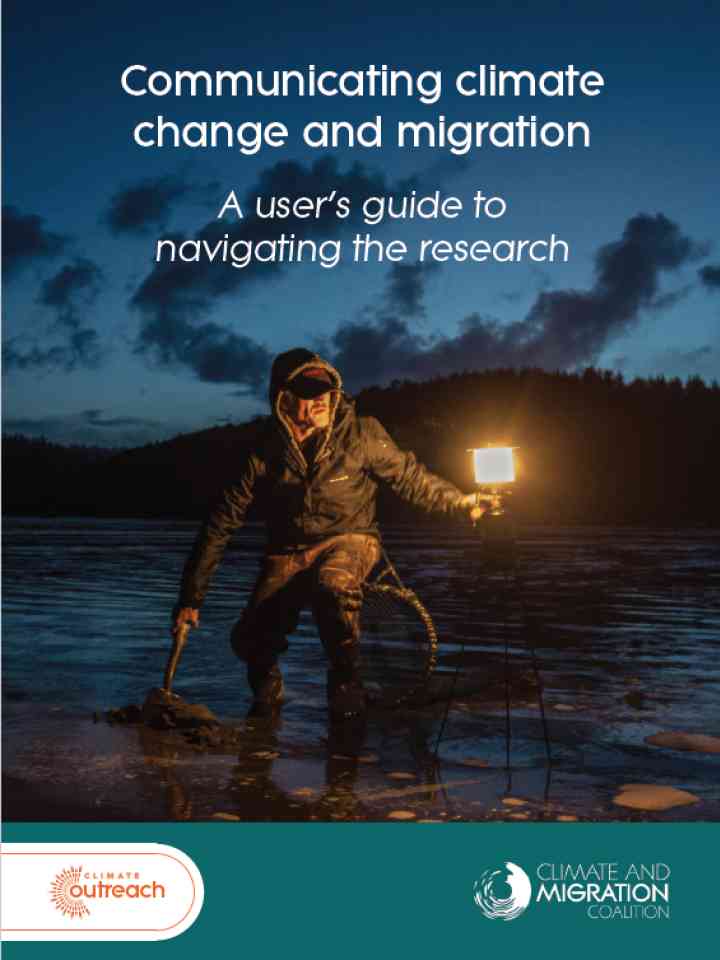Communicating climate change and migration: A user’s guide to navigating the research
This report aims to guide practitioners in navigating the academic research focused on communicating about climate-linked migration. It is intended to help practitioners understand the relevant research insights available and consider how to deploy them when creating communication campaigns and projects. Over the coming decades, climate change will reshape patterns of migration and displacement. The need for clear, empathetic communication on climate-linked migration has never been greater. The review of academic literature reveals where current research on climate-migration communications sits, that include: firstly, research is unevenly distributed, with few studies focusing on the perspectives of people on the move and communities of origin; secondly, studies disproportionately focus on WEIRD (western, educated, industrialised, rich, democratic) populations, limiting the global relevance of the research; thirdly, current ‘test narratives’ in the research often simplify or misrepresent the complexities of climate-linked migration, portraying it as a crisis and ignoring nuance; lastly, there is limited interdisciplinary collaboration, with climate-focused research often overlooking migration expertise and lived experience.
This report shares recommendations on how to navigate at this intersection to create communications campaigns and projects, and on which areas to be focused on for future direction accordingly, that are as follows:
- Re-centre the research focus on geographic areas and populations that are most likely to see climate-linked (im)mobilities, and include more diverse audiences as research participants.
- Seek closer collaboration between migration, climate and communications experts in research design in order to capture the nuance and complexity of climate-linked (im)mobilities while still telling powerful stories that practitioners can use and apply in their work.
- Strive for greater representation of the perspectives of migrant communities and/or communities of origin in the narratives and frames that are tested with audiences.
- Explore more stories of climate-linked (im)mobilities that include agency on the part of people on the move, for example by including narratives of climate-linked mobility as adaptation.
- Work more directly with - and possibly include as research participants - powerful actors such as governments, media or INGOs, in order to capitalise on the outsized effects they have in shaping the public discourse on the intersection of climate change and migration.
Explore further

